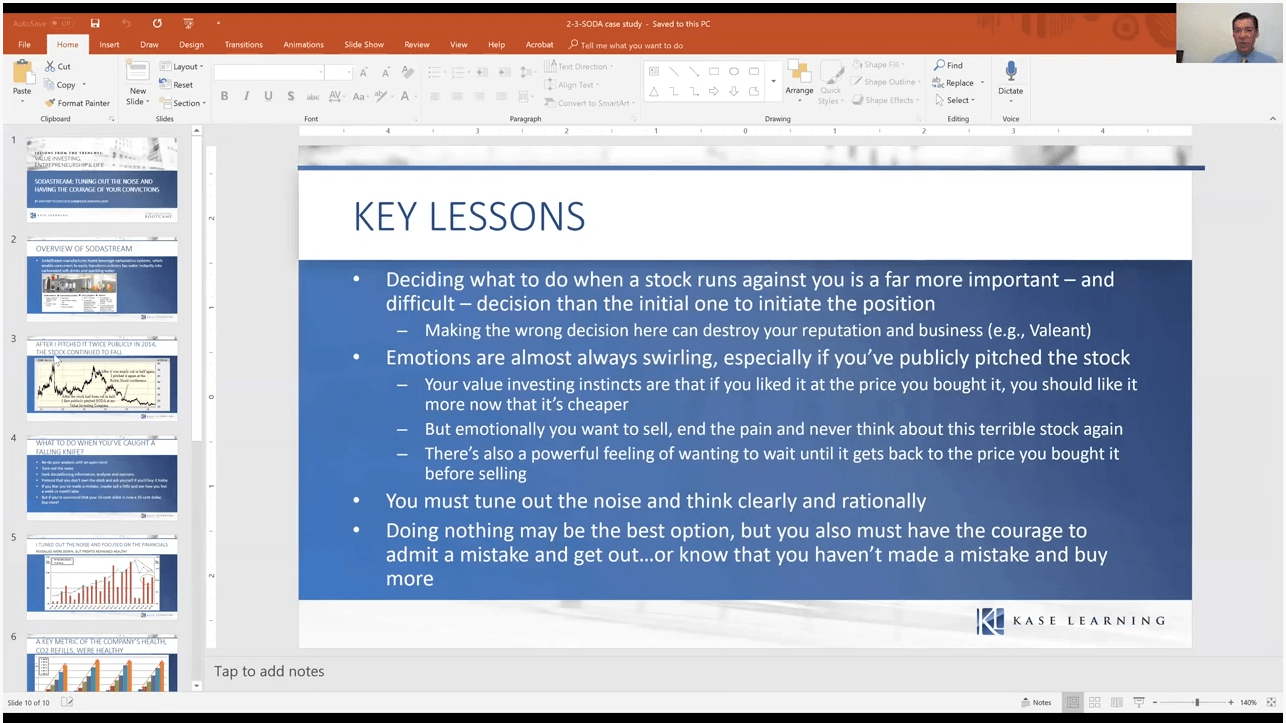The Kelly formula states that an investor should calculate edge divided by odds to determine how much to invest in a security. Founder Whitney Tilson and his friend Glenn Tongue share their thoughts on the formula, and whether investors should use the tool.
Q3 2019 hedge fund letters, conferences and more
Transcript
Could you send the template to you? Do you use Kelly formula as a tool? You know, the Kelly criteria is a great theoretical framework with some very good mathematics underpinning it. The problem is, I don't know anyone that uses it that effectively estimates the inputs appropriately. So for example, Whitney talked about Mark Sellers and Contango, he used the Kelly criteria, the Kelly principle. And his inputs resulted in a conclusion that the right position size was 400% for that particular investment, and he thought he's been conservative by only making a 200% position. The inputs and the variables are what word important so, so ultimately, no, we don't think Kelly criteria as a tool is particularly useful. It, we use decision trees in situations that have outcomes like zero as one of them.
We use some basically just scenario analyses in, in other sort of, you know, Berkshire Hathaway kind of style investments, as far as portfolio management tools and excel templates associated with that. We never use them and I haven't time thinking about that maybe somebody on the chat line can add that principle. But Hussein, put up a really important point up here, which is, people always underestimate the probabilities of a zero.
Kelly formula explained
And since equity is a residual claim on business, there is always a zero on the decision tree in some cases is extremely small, but there's always a zero and if you do not assume the downside and Kelly that's where you get the wild asset diversification estimates in there.
I still remember Mark Sellers on stage we invited him to speak at the value investing Congress. And he walked through the Kelly formula and I think he was looking at, if I'm [inaudible] my guess it wasn't Contango, I think it was something like HomeDepot, and the stock was at 23 bucks a share. And he mapped out a range of scenarios and applied the Kelly formula. Rhe only thing I remember is, is that his downside worst case scenario that he plugged into the model was $20 a share. And I sat and of course, the Kelly formula correctly tells you that if your absolute worst case scenario in any investment is down less than 10%.
And there's no possibilities, zero possibility of anything worse than that. There are plenty of upside scenarios that you should lever up and you know, put 500% of your funds into that particular investment. But of course, you always, always, always have to model the chance of a zero even something like Berkshire Hathaway, you have to model you know, a 1% chance or something less than 1% chance of a zero. There is no such thing as something that can't go to zero, as we've learned again and again, and that will give you very different results, if you plug that into the Kelly formula.






